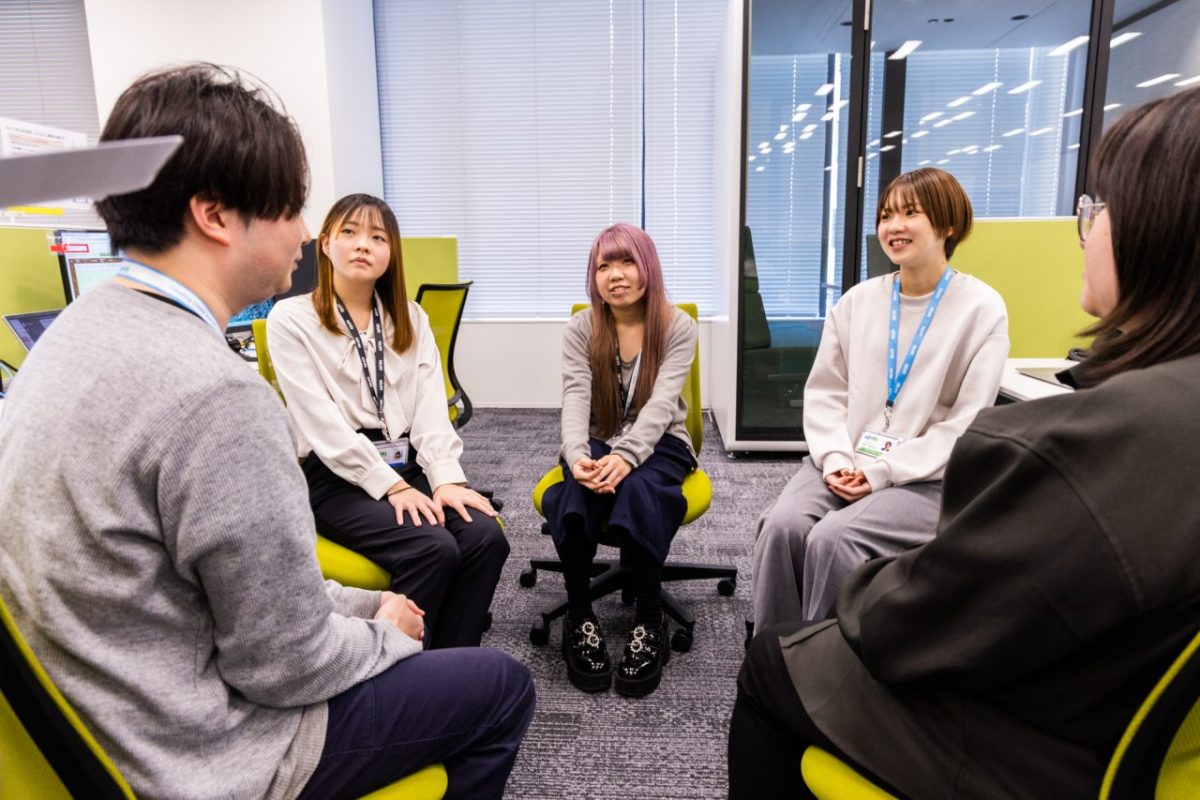Choosing and Governing the Right Gen AI Partner in Japan: 10 Questions to Ask
- Home
- Insights
- Articles
- Doing Business in Japan
- Choosing and Governing the Right Gen AI Partner in Japan: 10 Questions to Ask
Generative AI has shot from futurist talking-point to P&L priority in Japanese boardrooms. Yet the country still lags behind its peers on practical adoption. The government’s 2024 Information and Communications White Paper¹ found that only 9.1 percent of people in Japan use Gen AI tools today, versus 46 percent in the United States and 56 percent in China.
Inside corporations the picture is brighter—but uneven. A fresh survey of 117 executives at firms with more than 1,000 employees showed that over 80 percent have launched or budgeted a Gen AI initiative², while 47 percent admit they lack a clear governance model or data-security roadmap to scale those pilots.
This gap—between experimentation and operational confidence—is precisely where an outside partner can tip the balance. But partnership in Japan is never a simple vendor transaction. Buyers must weigh regulatory compliance under the Act on the Protection of Personal Information (APPI)³, accommodate cultural service norms such as omotenashi (attentive hospitality), and navigate a policy environment that favors voluntary, risk-based self-governance. In short, choosing the wrong partner can stall value creation before the first chatbot ever greets a customer.
To help CX and operations leaders avoid that trap, this article lays out ten due-diligence questions—for governance, data residency, cultural fit, and KPI ownership—that should inform any Gen AI outsourcing RFP. First, though, we need to understand why governance, not algorithmic cleverness, now determines success.
Why governance—not algorithms—now decides success
Japan’s regulatory north-star is “light touch, heavy accountability.” In April 2024 the Ministry of Economy, Trade and Industry unveiled AI Guidelines for Business Ver 1.0⁴, merging three earlier ethical codes into one pragmatic framework. The Guideline lays out several main principles—including risk assessment, human-in-the-loop validation, transparency, security, and lifecycle monitoring—which shift day-to-day responsibility onto the organisations deploying AI, not the government.
That stance has only hardened. A May 2025 policy commentary from East Asia Forum describes Tokyo’s next-phase AI strategy as “pragmatic, relatively hands-off ‘light touch’ governance,⁵” emphasizing innovation speed while expecting enterprises to police themselves. In effect, the government is betting that competitive pressure and reputation risk will drive companies to maintain rigorous controls without prescriptive statutes.
For customer-experience leaders this means governance is no longer a legal compliance checkbox—it is the lever that unlocks (or blocks) scale. Any external partner must therefore demonstrate:
- Operationalised risk registers that identify use-case hazards— hallucination, privacy breach, language bias—and map them to mitigation actions.
- Audit-ready human-in-the-loop workflows: authenticated overrides, escalation trees, and timestamped logs that satisfy internal audit and, if necessary, third-party investigators.
- Change-management agility so policies can pivot when the guideline is updated or when sector regulators (FSA for finance, MIC for telecoms) tighten their own rules.
Failure on any of these fronts is not theoretical. Japanese consumers have shown scant tolerance for tech mis-steps that undermine the nation’s service ethos. One viral screenshot of an impolite chatbot response can torpedo brand trust built over decades. A sound governance design is therefore table stakes—and the quickest path is often through a specialist BPO or systems integrator that has already built the guardrails.
In the next section we drill into the ten specific questions that separate aspirational suppliers from true Gen AI partners capable of delivering Japanese-grade omotenashi CX at scale.
Ten pivotal questions to vet your Gen AI partner
Below is a due-diligence checklist you can lift straight into your RFP. Each question tackles a blind spot that has tripped up early adopters in Japan’s fast-moving Gen AI market.
1 Do you have a playbook for METI’s AI Guidelines for Business?
The guidelines do not outline “best practices” but rather give a yardstick the government and the media will use when incidents occur. Ask to see a living risk register, bias-test cadence and escalation workflow mapped to the guidelines’ principles. If that documentation does not exist, you are effectively funding the partner’s first compliance experiment.
2 How will your controls evolve as Japan’s light-touch policy tightens?
A narrow AI Bill is already before the Diet⁵, with scope left intentionally open so ministries can add Rules of Practice later. Partners must show a track record of “policy horizon-scanning” and rapid control updates in order to incorporate future updates the legal framework. This needs to be an ongoing activity, not a once-a-year audit.
3 Where will our data live, and how is cross-border transfer fenced?
Under APPI³ (Japan’s personal data protection act) personal data may cross borders only if equivalent safeguards are demonstrably in place. Demand specifics. Is your private cloud hosted in Japan? Regional Amazon Bedrock? On-prem inference for PII? Encryption at rest is a must, as are automated PII redaction and vendor sub-processor maps.
4 What executive-level enablement do you provide to close the literacy gap?
More than 80 percent of large Japanese companies have a Gen AI budget or pilot, yet almost half say unclear governance stalls roll-out. Press your partners for workshops that translate model metrics into business KPIs, steering-committee coaching, and board-ready dashboards. Governance without C-suite fluency is just compliance theater.
5 Which CX metrics will you commit to—financially?
Deloitte’s 2024 Global Contact Center Survey⁶ shows “service innovators” that already use Gen AI hit 57 percent more of their operational targets than laggards, largely because they lock KPIs—AHT, NPS, cost-to-serve—into provider contracts from day one. A serious partner should be willing to share upside (or penalties) on at least one hard metric.
6 How do you embed omotenashi in automated interactions?
Tone matters. A brusque LLM can wipe out decades of brand equity overnight. Look for Japanese-language fine-tuning, politeness hierarchies, and supervised learning loops that flag honorific errors or culturally awkward phrasing. Partners that cannot demo this have not earned their place on your shortlist.
7 What is your method for selecting and benchmarking foundation models?
No single LLM suits every use case. Ask for results of side-by-side tests—latency, summarization accuracy, cost per 1,000 tokens—similar to the public benchmarks used to rate the performance of LLMs at multiple tasks.
8 Can you future-proof with sovereign or BYO-model options?
Tokyo has earmarked ¥110 billion (≈ US$740 million) for domestic AI and chip capacity to reduce reliance on U.S. hyperscalers⁷. Your contract should not lock you into a vendor that cannot pivot to Japanese LLMs or edge-GPU clouds when economics—or geopolitics—shift.
9 How will you orchestrate hybrid human–AI workflows?
Governed Gen AI is useless if agents ignore, override or duplicate it. Probe for queue-design blueprints, real-time agent-assist UX, and change-management programs that put supervisors—not data scientists—in the driver’s seat for continuous tuning.
10 What is your continuous-improvement cadence?
Generative models drift and governance that ends at “go-live” is no governance at all. Expect quarterly retraining sprints, A/B test plans and a joint success dashboard that evolves as customer language, products and regulations do.
Together these ten questions force vendors to prove they can deliver compliant, culturally attuned and commercially accountable Gen AI—before you hand over a single byte of customer data.
Turning due diligence into competitive advantage
Choosing a Gen AI partner in Japan is not a procurement chore. Rather, it is a strategic initiative that can shave points off cost-to-serve while deepening the emotional bond consumers expect from omotenashi. We’ve already seen that contact centers deploying Gen AI show improved metrics from average-handle-time (AHT) to Net Promoter Score. Those numbers resonate with CFOs, but they also illustrate a broader truth: governance disciplines are the growth lever. When the risk register, data-residency model and KPI scorecard are negotiated up-front, Gen AI moves out of the experimentation phase and into the very real realm of P&L.
Governance as a trust signal—externally and internally
Tokyo’s “light-touch, heavy accountability” stance turns robust governance into brand capital. A partner able to demonstrate an audit-ready implementation of METI’s AI Guidelines for Business earns you not only regulatory peace of mind but also employee confidence. Agents are far more willing to rely on an AI assistant when they know escalation trees and bias tests exist. That confidence shows up in productivity.
Data residency—board-level non-negotiable
Cross-border transfers under APPI require equivalent safeguards in the destination jurisdiction—a compliance burden often glossed over in glossy AI brochures. Savvy buyers therefore press partners on encryption, token-level redaction and the physical location of inference workloads. The reward? Faster security sign-off and fewer legal-team detours that can add months to a launch timetable. Looking ahead, sovereign-cloud optionality will only climb the priority list. Japan has already earmarked trillions of yen for domestic chip capacity and AI infrastructure to blunt geopolitical risk and hyperscaler pricing shocks. A partner that can swing between U.S. hyperscalers, domestic GPU clouds and on-prem deployments future-proofs your architecture—and your negotiating power.
Cultural nuance as CX differentiator
Global CIOs sometimes underestimate how quickly a tone-deaf chatbot can melt decades of brand equity in Japan. Japanese customers judge an AI agent on the clarity of its keigo, the cadence of apology phrases, and its ability to anticipate needs in the spirit of omotenashi. Cultural fluency, then, is not “nice to have”, it is central to revenue retention. Partners who fine-tune LLM outputs against graded politeness levels—and continuously retrain on real interaction transcripts—deliver measurable NPS lifts that offshore competitors rarely match.
Linking governance to hard KPIs
The next competitive edge is contract design. After the due-diligence phase, successful clients translate each of the ten vetting questions into a joint KPI or service-level metric. Example:
| Governance question | Operational translation | Value unlocked |
| Data-residency controls? | 100 % of PII tokens processed in-country | Cuts legal review cycle by 40 % |
| How will model drift be managed? | Quarterly retrain with ≤ 2 % hallucination rate | Protects brand voice & reduces manual QA |
| Which CX metrics will you own? | AHT capped at 5 min, NPS +8 points YoY | Hard ROI the CFO can track |
When partners have skin in the game—fee at risk or gain-share upside—governance committees turn from policing to joint optimisation sprints, accelerating innovation without sacrificing compliance.
A rollout blueprint: pilot fast, scale safely
- 90-Day Proof of Concept
Deliverables: risk register aligned to METI pillars, shadow-mode LLM with human override, baseline KPI capture.
Success gate: ≤ 2 % hallucination, ≥ 95 % agent adoption. - Limited Production (Months 4-8)
Deliverables: APPI-compliant data pipeline, automated audit logs, C-suite dashboard.
Success gate: AHT –15 %, wrap-up time –30 %, no severity-one incidents. - Enterprise Scale (Month 9 and beyond)
Deliverables: multi-model orchestration (sovereign & hyperscaler), quarterly drift retrain, omnichannel language tuning.
Success gate: NPS +8 points, cost-to-serve –20 %, governance refresh in < 30 days post-policy update.
This phased approach mirrors Office Chatani’s April 2025 survey², where companies that pushed a use case from pilot to full production within a year cited governance rhythm and executive literacy as the decisive enablers.
The TMJ advantage
TMJ offers a Japan-first Gen AI governance stack certified against both APPI and METI guidelines. Our contact-center heritage means we begin with CX metrics—not model perplexity—while our data-science team fine-tunes outputs to the subtle gradations of Japanese politeness. We operate across private-cloud regions in Tokyo, Osaka and Sapporo, and can redeploy to sovereign GPU clusters as domestic capacity ramps. And because accountability matters, every contract pegs a slice of our fee to the KPI table above.
Next steps: from checklist to competitive moat
Governance is no longer simply a function of compliance, it directly impacts revenue. Enterprises that embed the ten questions early—and demand quantitative answers—turn supplier meetings into strategy sessions, not sales pitches. Cost-to-serve falls, customer loyalty climbs and, crucially, the organisation gains the agility to spin up new AI use cases without reopening a two-year policy debate.
Ready to see how a Japanese-grade governance stack can deliver immediate CX wins? Let’s schedule a 30-minute discovery call.
¹Ministry of Internal Affairs and Communications (2024). White Paper on Information and Communications in Japan.
https://www.soumu.go.jp/johotsusintokei/whitepaper/eng/WP2024/pdf/01-chap5_sec1.pdf
² The Economic Times (2024). Over 80% of Japanese corporations now implementing or considering Gen AI: Report.
³Personal Information Protection Commission. Legal Framework.
https://www.ppc.go.jp/en/legal/
⁴ Ministry of Economy, Trade and Industry (2024). AI Business Guidelines Ver.1.0.
https://www.meti.go.jp/english/press/2024/0419_002.html
⁵ East Asia Forum (2025). Less regulation, more innovation in Japan’s AI governance.
https://eastasiaforum.org/2025/05/21/less-regulation-more-innovation-in-japans-ai-governance/
⁶ Deloitte Digital (2024). Global Contact Center Survey 2024.
https://www.deloittedigital.com/content/dam/digital/global/documents/insights-20240711-gcs-survey-report.pdf
⁷ Tech Insight Zone (2025). Japan is investing $740 million to achieve AI supremacy.
https://techinsightzone.com/japan-is-investing-740-million-to-achieve-ai-supremacy/
Related Insights
Expand Your Business in Japan Today!
Unlock growth opportunities in the Japanese market with our expert support. Contact us to explore how we can help you succeed.







